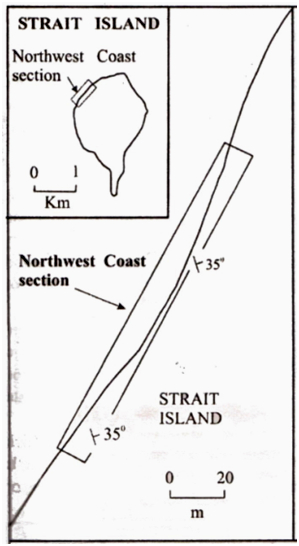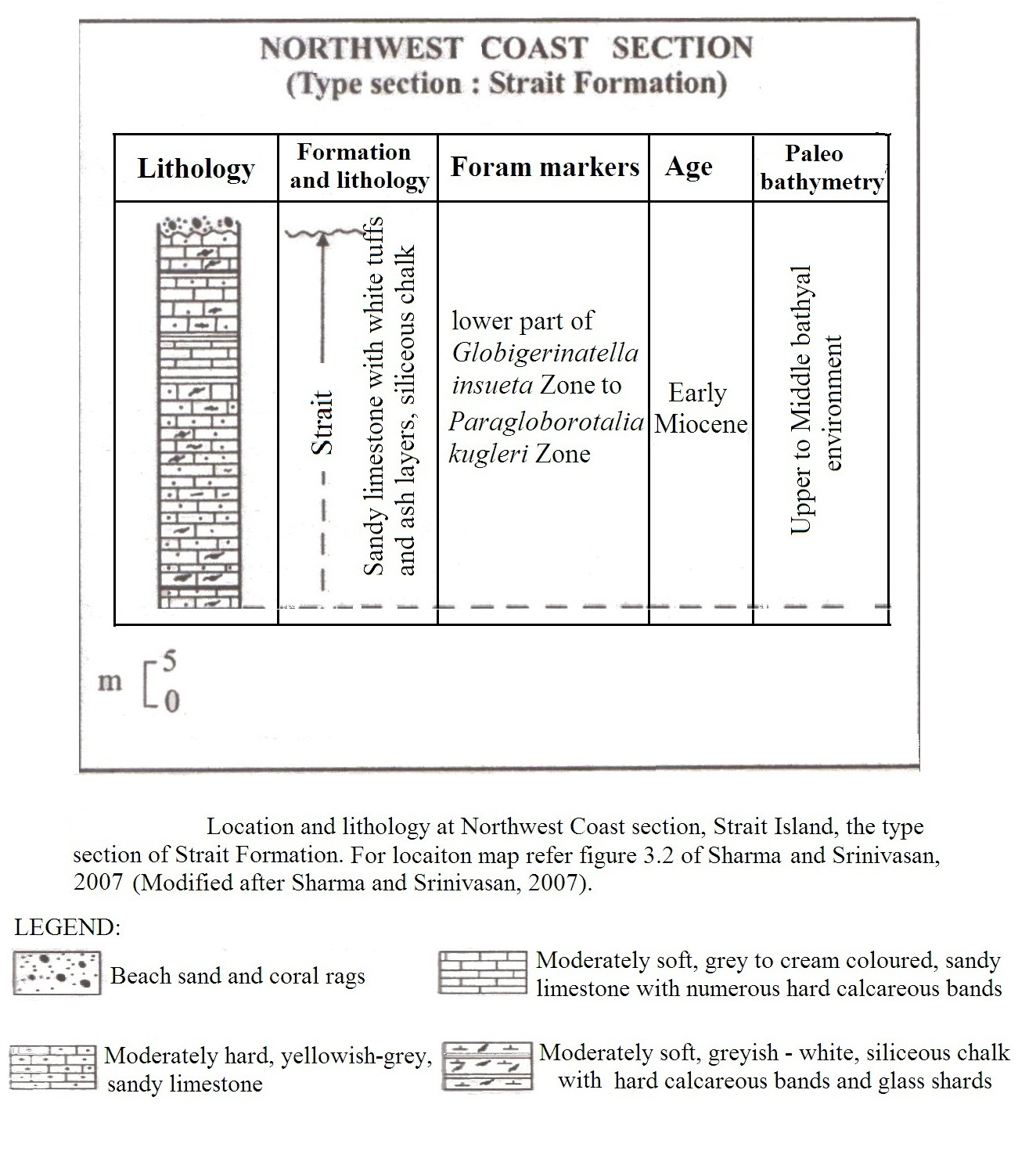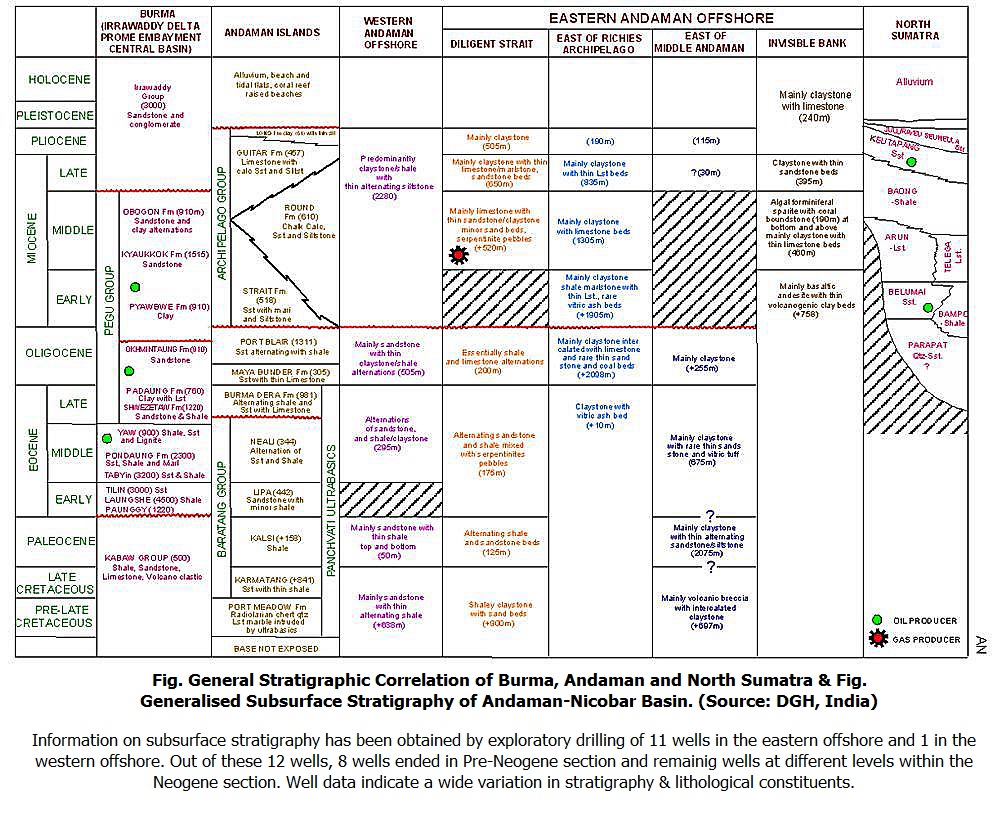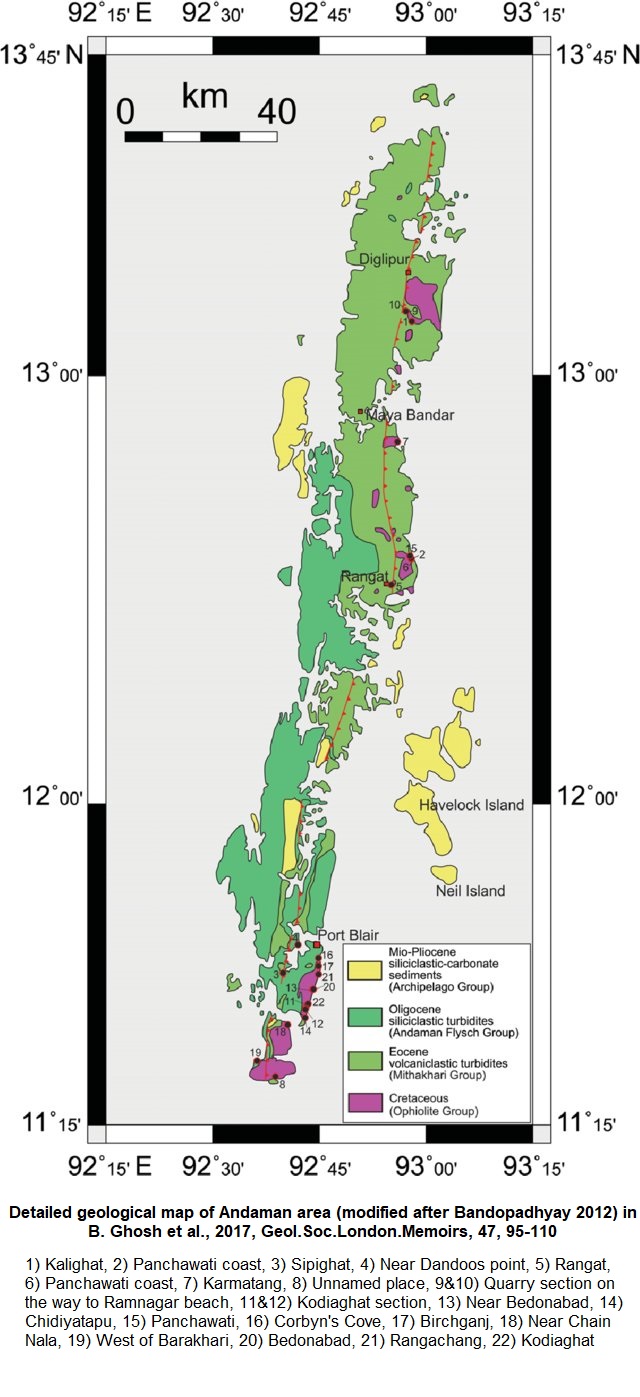Strait Fm
Type Locality and Naming
Named after Strait Island. This is the lowermost unit of Archipelago Group. Earlier, Chandra and Guha (1963) informally proposed the name Strait Sandstone Formation to the lowest unit of the Neogene sequence. Chatterjee (1967) described lithology of the Strait Sandstone Formation designating Strait Island as the type locality of the formation The name Strait Shell, Sandstone, Limestone and conglomerate Formation was proposed by Karunakaran et al., (1968) for the lowest unit of the Archipelago Group. Srinivasan and Sharma (1973) named Strait sandstone Formation for the lowest stratigraphic unit of the Archipelago Group. Srinivasan and Azmi (1976b) designated the unit as Strait Formation and nominated Northwest Coast section at Strait Island as reference section / locality for the formation. However, following the code of Stratigraphic Nomenclature (Salvador, 1994), the Northwest Coast section is designated here as the type area of Strait Formation (Sharma and Srinivasan, 2007).
[Original Publication: Chandra, P.K. and Guha, D.K. (1963) The Neogene rocks from Andamans. Sci. and Cult., 29(4), pp. 202-203.].
[Figure 1 = Map of Strait Island showing the stratotype locality (after Sharma and Srinivasan, 2007).]
Lithology and Thickness
Sandy limestone. The type section is made up of moderately soft, grey to cream colored sandy limestone with numerous very hard calcareous bands. Thickness is 66 m in the type section.
[Figure 1: Type section of Strait Fm at Northwest Coast section, Strait Island (modified after Sharma and Srinivasan, 2007)]
[Figure 2: Generalized Subsurface Stratigraphy of Andaman-Nicobar Basin (from dghindia.gov.in)]
Relationships and Distribution
Lower contact
Gee (1927) observed a band of conglomerate at the lower contact of Strait Formation with the underlying Port Blair Fm in the southwest part of Strait Island (Srinivasan and Azmi, 1976b).
Upper contact
Overlain by the Inglis Fm
Regional extent
[Figure 3: General Stratigraphic Correlation of Burma, Andaman and North Sumatra (from dghindia.gov.in)]
[Figure 4: Detailed geological map of Andaman area (modified after Bandopadhyay 2012) showing locations mentioned in numbers in B. Ghosh et al., 2017, Geo.Soc.London.Memoirs, 47, 95-110)]
GeoJSON
Fossils
Srinivasan and Azmi (1976b) recorded rich assemblage of foraminifera of Globorotalia kugleri Zone to lower part of Globigerinatella insueta Zone
Age
Depositional setting
The sandy limestone and the hard calcareous bands have yielded a good assemblage of benthic foraminifera suggesting an Upper to Middle bathyal environment of deposition. A submarine volcanism in Early Miocene is a significant event and is widely recorded in Andaman basin. This volcanic activity is represented by Tuff/ash beds in the outcrops and well sections (Sharma and Srinivasan, 2007).
Additional Information




